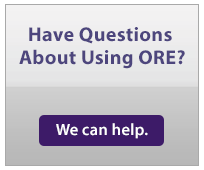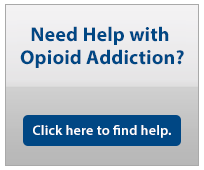CDC Podcast Lifesaving Naloxone Transcript
CDC Podcast Lifesaving Naloxone Transcript
- Length: 7:15
Speaker: This program is presented by the Centers for Disease Control and Prevention.
Speaker: I’m Jeff Gibbons. What if I told you there is a medication that can reverse an opioid overdose is easily available to you in most states without a prescription and can be carried and administered easily. Well, today, Lieutenant Commander Jamie Mills, an overdose data to action coordinator with the Centers for Disease Control and Prevention’s Division of Overdose Prevention, is going to talk about a life saving medication called naloxone that can reverse an overdose from opioids, including heroin, fentanyl and prescription opioid medications. What it is, how it works and what to do if you need to use it. Welcome, Doctor Mills.
Doctor Mills: Thank you for having me.
Speaker: Before we talk about the specifics of naloxone, can you explain what the term harm reduction means and what it has to do with Naloxone?
Doctor Mills: Harm reduction refers to public health policies, programs and practices that can help keep people safer during activities with the potential for negative consequences. When we talk about using drugs, carrying the lock zone is a way to reduce harm because naloxone is a medication that can save someone’s life if they experience an overdose from an opioid.
Speaker: Dr. Mills, what exactly is Naloxone?
Doctor Mills: Naloxone is a non-addictive, lifesaving medication, often given as a nasal spray or through an autoinjector that can reverse an opioid overdose, but only if given in time. It works by helping a person breathe normally again, if that person’s breathing slows or stops because of an opioid.
Speaker: Does it only work for an opioid overdose?
Doctor Mills: It’s important to note that Naloxone only reverses overdose from opioids, but that can include all opioids like heroin, fentanyl and prescription opioid medications.
Speaker: It won’t work on non-opioid drugs.
Doctor Mills: Correct. Naloxone cannot reverse overdose from drugs like cocaine, meth or ecstasy. However, if someone is experiencing a drug overdose, it’s always best to use it regardless of the drug, you know, or think someone has taken. That’s because drugs are increasingly mixed with opioids like fentanyl without a person knowing it. So, administering the lock zone just in case might actually save someone’s life. It’s also important to note that Naloxone won’t hurt someone if they’re overdosing on drugs other than opioids.
Speaker: That’s really important to know what is and what isn’t an opioid. And thank you for clarifying and reinforcing that Naloxone should be used in any drug overdose situation where opioids may be involved. And now that we know more about that, how does naloxone work?
Doctor Mills: Quickly reverses an overdose by blocking the effects of opioids. It can restore normal breathing within 2 to 3 minutes in a person whose breath has slowed or even stopped as a result of opioid overdose. More than one dose of naloxone may be required when stronger opioids like fentanyl are involved. If you are with someone who you think is overdosing, the first thing you should do is call 911. Next, if you have naloxone, use it on a person who is overdosing and stay with them until emergency help arrives. Also, you’ll need to act fast. There are many signs of overdose. Here are seven to look out for: small, constricted pinpoint pupils falling asleep or losing consciousness, slow, weak or no breathing, choking or gurgling sounds, limp body cold or clammy skin, discolored skin, especially in lips and nails.
Speaker: What happens after a person gets naloxone?
Doctor Mills: If you give naloxone to someone, stay with them until emergency care arrives. Medical providers can help decide if someone needs more than one dose of naloxone to reverse the overdose. Also, people who overdose and get naloxone need to be monitored for at least four hours afterwards to make sure they’re breathing returns to normal.
Speaker: Would imagine there are people who may be nervous giving naloxone to someone who’s overdosing. What are some strategies to encourage people to give this life saving drug right away after calling 911?
Doctor Mills: I think it’s helpful to remind people that Naloxone is a safe medication that is very easy to use, and it won’t harm someone if they didn’t actually take an opioid. Also, most states have passed laws known as Good Samaritan laws to protect those who are overdosing and anyone assisting them in an emergency from arrest charges or a combination of these. So, if you think someone has overdose, do not leave them alone, roll them on their side or stomach and call 911 immediately.
Speaker: Really important to know about state laws. That way you can get someone help without worrying about the legal implications of illicit substances. So, you mentioned that Naloxone can even reverse an overdose from fentanyl in addition to other opioids like heroin and prescription opioid medications. So, what exactly is fentanyl?
Doctor Mills: Is a synthetic opioid that is up to 50 times stronger than heroin and 100 times stronger than morphine. It is involved in most opioid overdose deaths, as I shared earlier. Fentanyl can be mixed into other drugs like heroin or cocaine, without a person knowing, increasing the danger of overdose. You can’t see, taste or smell fentanyl, which is so powerful that overdoses can cause immediate loss of consciousness in a matter of seconds to minutes. In these cases, especially naloxone can save lives.
Speaker: Can anyone get naloxone? And how do I get it?
Doctor Mills: Naloxone is available in all 50 states. And in most states, you can get naloxone at your local pharmacy without a prescription. If you’ve been prescribed high dose opioids, you can also ask your doctor or pharmacist for naloxone. Overdoses can happen by accident, and having naloxone can save your life. You can also get naloxone from community-based naloxone programs and most syringe services programs.
Speaker: What else do people need to know about Naloxone and why they should you have it?
Doctor Mills: Short answer is simply that naloxone saves lives. Nearly 50,000 people died from an opioid involved overdose in 2019. And one study found that in nearly 40% of those deaths, someone else was with that person. It could be your friend or family member. Having naloxone can prevent someone you love from experiencing a fatal overdose. And if you have an opioid use disorder or think you may be at risk for an overdose, consider carrying naloxone and tell others you have it so they can help you if you overdose.
Speaker: Dr Millis, thank you so much for your time today. For more information, visit cdc.gov or call one 800 CDC info.

